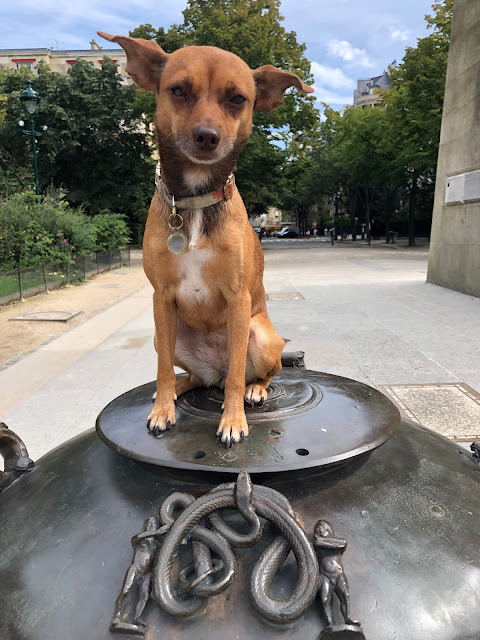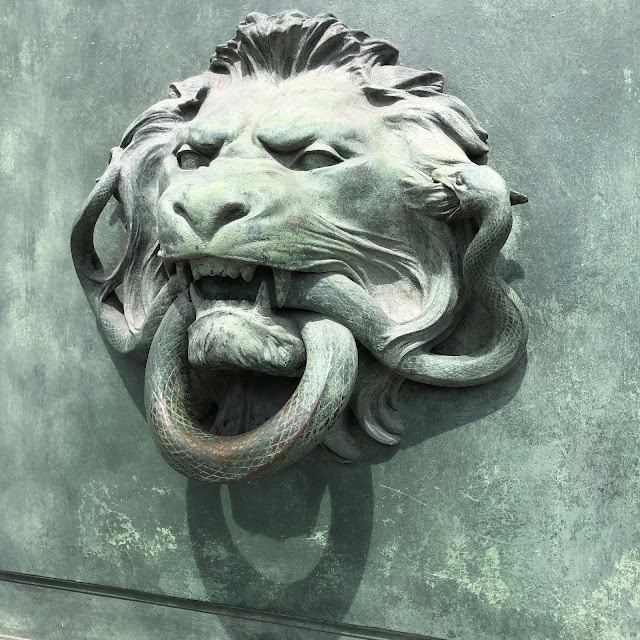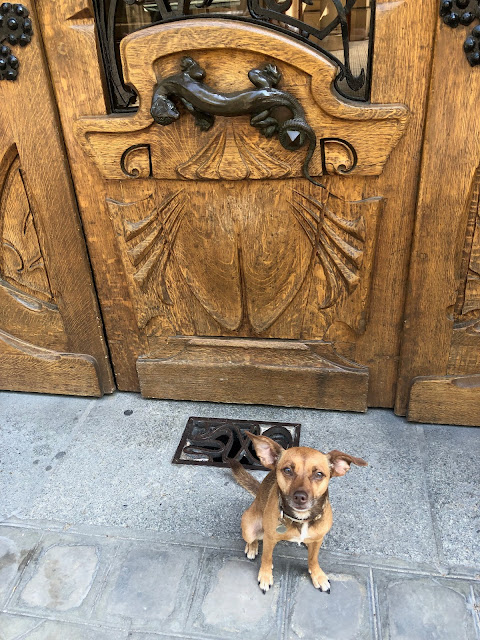 |
| Garter snake on the Monument des Droits de l’Homme, Champ-de-Mars, 7th Arr. |
Snakes and lizards--and at least one two-headed turtle--are a recurring motif around Paris. In some cases, they are baffling symbols, such as the garter snakes that adorn the Monument des Droits de l’Homme ("rights of man"), above. Then again the entire Monument, installed at the Champ-de-Mars in 1989 for the 200th anniversary of the Revolution, is a confusing mix of Masonic and Masonic-adjacent symbols--including the ouroboros snake eating its own tail, an occult classic. So random obfuscation may be part of the monument's theme, which may or may not be a commentary on the rights of man.
.jpeg) |
| The ouroboros of the Monument des Droits de l’Homme. |
Reptile symbolism is a bit clearer when used in classical motifs. For example, snakes routinely appear on medical symbols such as the caduceus and the rod of Asclepius (the Greek god of medicine). The façade of the 1808 Fontaine de Mars (La Fontaine du Gros-Caillou) includes Asclepius' daughter Hygeia, the Greek goddess of health, holding a snake as she confers with Mars, the god of war. Their presence together in this instance was an homage to a nearby military hospital that cared for war casualties from the time of Louis XV until its demolition near the end of the 19th century.
Incidentally, the serpent as used in the fountain's façade lends the scene a seduction flavor reminiscent of the Old Testament. But whereas in Genesis Serpent helped Eve close the deal with Adam, Mars seems to be underwhelmed by Hygeia's advances--not even when urged on by the Coq Gaulois, France's traditional symbol of its national virility.
 |
| Any attraction between war and health is not mutual, apparently. |
Back of the envelope, snakes as figures of menace seem to outnumber figures of health and ... um ... vigor. They often appear in combat with big cats, as can be seen in the Tuileries (a lion stomps a serpent) and in Parc Montsouris (a puma stomps a serpent). The age-old battle between snakes and lions even carries over to the door knockers at the Palais de Justice, on the Île de la Cité.
 |
| Palais de Justice, 1st Arr. |
Parisian door knockers and handles are popular locations for snakes and other reptiles, whether tangled together in high polish or eating corn (for some reason).
 |
| Highly-polished fighting snakes, 7th Arr. |
 |
| 29 Avenue Rapp. Lavirotte's famous lizard door handle, which may or may not riff on an old euphemism for Mars' unsheathed sword. |
 |
| Lavirotte's less famous corn-eating lizard., 151 rue de Grenelle, 7th Arr. |
On the other hand, I've only seen actual, living lizards on the Île aux Cygnes, in the 16th Arr. The photo below is not great, but for scale, I'm guessing this one was about the size of a Citroën.
 |
| We're gonna need a bigger ear of corn. |

.jpeg)










Comments
Post a Comment